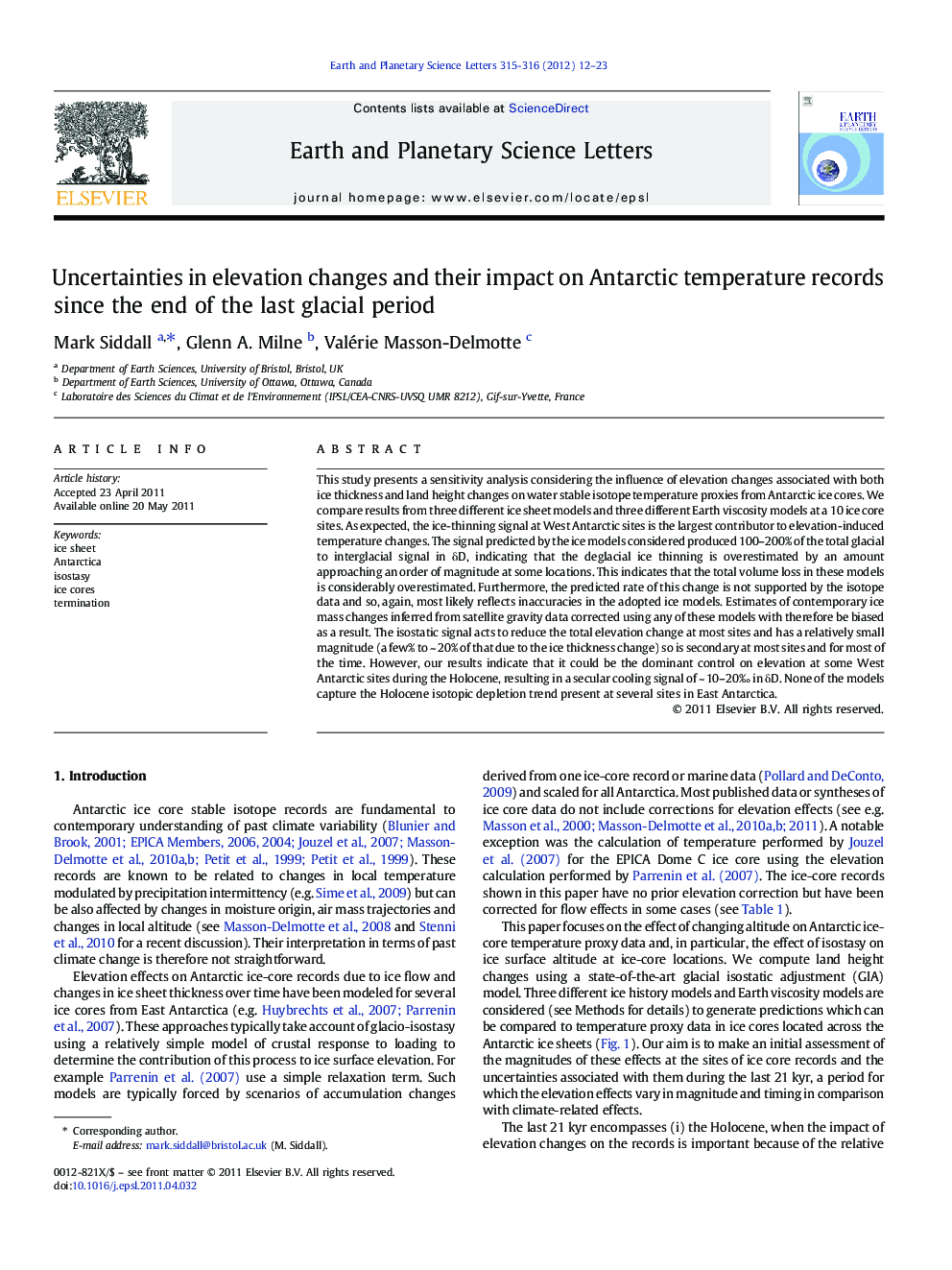| Article ID | Journal | Published Year | Pages | File Type |
|---|---|---|---|---|
| 4677605 | Earth and Planetary Science Letters | 2012 | 12 Pages |
This study presents a sensitivity analysis considering the influence of elevation changes associated with both ice thickness and land height changes on water stable isotope temperature proxies from Antarctic ice cores. We compare results from three different ice sheet models and three different Earth viscosity models at a 10 ice core sites. As expected, the ice-thinning signal at West Antarctic sites is the largest contributor to elevation-induced temperature changes. The signal predicted by the ice models considered produced 100–200% of the total glacial to interglacial signal in δD, indicating that the deglacial ice thinning is overestimated by an amount approaching an order of magnitude at some locations. This indicates that the total volume loss in these models is considerably overestimated. Furthermore, the predicted rate of this change is not supported by the isotope data and so, again, most likely reflects inaccuracies in the adopted ice models. Estimates of contemporary ice mass changes inferred from satellite gravity data corrected using any of these models with therefore be biased as a result. The isostatic signal acts to reduce the total elevation change at most sites and has a relatively small magnitude (a few% to ~ 20% of that due to the ice thickness change) so is secondary at most sites and for most of the time. However, our results indicate that it could be the dominant control on elevation at some West Antarctic sites during the Holocene, resulting in a secular cooling signal of ~ 10–20‰ in δD. None of the models capture the Holocene isotopic depletion trend present at several sites in East Antarctica.
► Our paper represents an innovative empirical way of studying ice sheets. ► We present a scale analysis of three Antarctic ice models during the termination compared to data. ► None of the models we examine capture the order of magnitude of the termination. ► Our study opens the door to profound rethinking of ice sheet processes on Antarctica.
